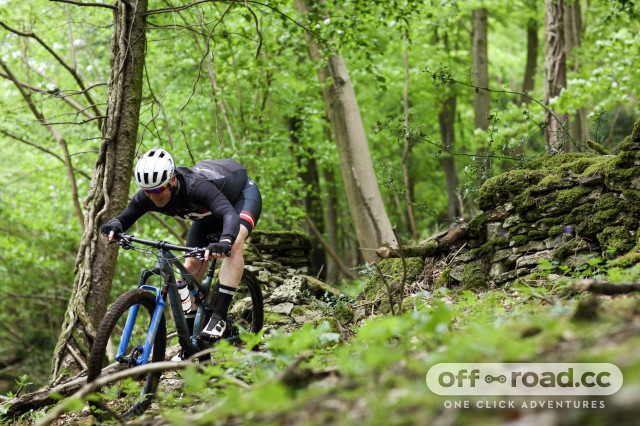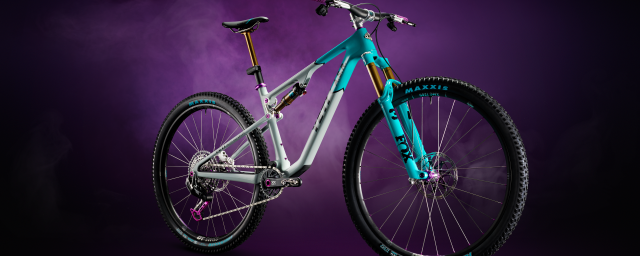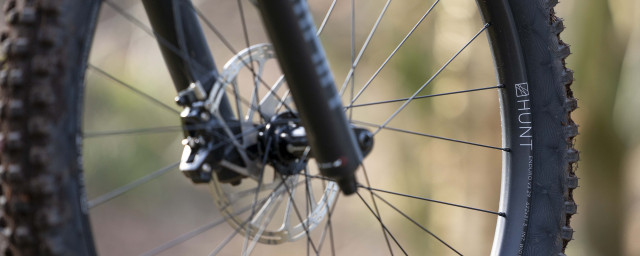What is downcountry?

‘Downcountry’ is a term that’s recently been flung around quite a lot in the bike industry and more often than not; it’s been met with a chorus of grumbles. Though, the relatively new genre of not quite trail – not quite XC is finding a firm foothold in mountain biking. It is a rather niggly space, however, so here I’ll unravel the secrets of downcountry and why it’s actually rather good.
- Best mountain bikes for under £3,000 - capable trail bikes that won't break the bank
- Merida Ninety-Six 8000 review
- Intense's XC and trail bikes get updated for 2022
The easiest way of describing what downcountry is is to say that it’s basically cross country but a little more. Generally, the bikes are still capable of munching mega miles and hauling lycra-clad masochists up silly climbs while elbowing their rivals off the track but downcountry is designed as XC’s relaxed spin-off with more of a lean towards descending capability hence its name.
With XC bikes being very much built for racing and with trail bikes getting longer, slacker and lower downcountry bikes fill that space that’s forming between the two by offering a bike with a more relaxed geometry than an XC thoroughbred but not as heavy, or as travel laden as a trail bike.
Downcountry has clear inspiration from cross country and it can be seen as a product of XC courses getting much more technical. Perhaps riders beginning to equip their cross country rigs with dropper posts to make their bikes easier to handle on the downs could have been the lightbulb moment for designers.
What is a downcountry bike?
This is the easy bit and to put it simply, a downcountry bike is a cross country bike that isn’t so… Cross country. Its angles get a little slacker, its reach gets a little longer and we start to see bigger travel figures to help the bike remain stable at higher speeds and confident when the trail gets steeper and rougher. It's much more likely that downcountry bikes will be specced with dropper posts out of the box too.
A conventional XC bike is made to be an absolute weapon up the hills and to make the most of every bit of energy a rider will put into it. It's also designed to save weight wherever possible, with very fast rolling tyres that have little tread and they'll rarely surpass 100mm of travel at both ends, that is if the rider opts for a full susser as hardtails are still a bike of choice to a few.
It's no lie that cross country thoroughbreds are stretching a little to help riders tackle the increasingly technical and challenging courses so downcountry is a bit of an extension of that. To put an XC bike into numbers, typically you'll find steeper head tubes of around 69° to 66.5° and seat tube angles of around the 75.5° mark. However, reaches do differ, though they tend to remain quite short compared to trail bikes to keep the bike behaved when pedalling uphill. Although Specialized's Epic EVO is built with a 470mm reach on a large, that's certainly edging into trail bike territory. To use one of Trek's bikes as an example on the other hand, the Supercaliber is built with a 455mm reach on a large.
To put that example into real bike terms, one that’s received the downcountry treatment is Canyon’s Lux Trail. As you might have guessed by the name, it’s basically a Lux, the brand’s podium topping XC rig but its reach has been stretched by 25mm, the head angle has been slackened by 2.5°, and gets a bump up in fork travel to 120mm. Those shifts alone are pretty radical and it's clear that it's been designed to stay confident while getting rowdy.
There are also bikes like the Cotic FlareMAX which hasn’t been influenced by an existing cross country bike but it marries a geometry that’s similar to a fully-fledged enduro bike with cross country travel figures and lightweight componentry. We're talking a RockShox SID fork with 120mm of travel and low-profile and lightweight but rather tready tyres from Wolfpack. Geometry-wise, it gets a whopping 480mm reach, a 65.6° head tube and a 75.4° actual seat tube angle. Where an XC bike might get a little nervous down steeper and more technical terrain, during testing I've managed to take the FlareMAX down trails that'll usually be better suited for a long legged trail bike.
Can an aggressive hardtail be considered a downcountry bike? This is where lines are blurred and typically, they're not as the componentry often errs towards the burly side.
However, it's not just about the bikes themselves as brands are now launching downcountry specific componentry, notably Öhlins, having released the RXF34 M.2 fork. A downcountry fork might sound a little strange but it receives a damper designed especially for the demands of fluid but fast trail riding. Its stiffness has been tuned too, with weight savings made where it matters.
Then there's Vittoria's Syerra Downcountry tyre. The brand says that it blends XC rolling resistance (or lack thereof) with the durability that you would expect from a trail tyre, thanks to a slightly beefier casing. While small, the knobs are pretty pronounced too, departing from the slick rubber found wrapping the hoops of full on XC racers.
Where to downcountry in the UK?
A better question would be where not to downcountry in the UK. As the bikes are a bit longer, and a bit slacker they're more capable than your run of the mill cross country bike, thus it could be said that they're much more versatile. Though trail centres are a sure-fire bet to satisfy all of your downcountry needs, we're talking Cannock Chase, Cwmcarn, Forest of Dean, Ashton Court and Afan. Head over to our Trail Guides page to see a selection of trail centres and what they have to offer.
Is downcountry here to say?
To put it short, yes. Admittedly, it is another thing for bike brands to try and sell you but the bikes have a very valid place in the world of mountain biking. Where geometry and suspension kinematics are getting pretty darn good, masses of travel isn't something that's as necessary as it was before. Unless you're riding ridiculous chunk 24/7, a shorter travel bike can actually be faster and there's a lot to be appreciated while ragging a lightweight bike with an aggro geometry.
With that, downcountry bikes can be attractive to a wider range of riders, whereas XC bikes are usually enviable to those incredibly fit folk who fire themselves uphill between the tapes. Downcountry is for the riders out there who want to cover miles quicker, and even do a few cross country events but also want a bike that can offer the aggressive ride of a trail bike while you're out on your Sunday ride.
As I've mentioned before, cross country bikes are getting more progressive due to XC courses getting much harder to ride, and already the bikes are themselves edging towards downcountry certification. So I don't think it'll be long before we see what we call downcountry bikes being raced in world-class XC events as the style of racing evolves. However, there is an existing niche for such machines and that's within marathon racing or XCM (cross country marathon) where riders are spending hours in the saddle going up but need extra forgiveness when hurtling back down. It's clear that downcountry machines are already being justified on a competitive level.
In a world where big travel is often favoured, I think downcountry should be welcomed as it offers a vastly different experience to mountain biking. It'll get riders with a taste for exploration pedaling far and wide while descending with full confidence. It's even something that winch and plummet monsters should take a glance at too as the bikes summon up a rowdy, exhilarating and supportive ride that's often lost within the depths of suspension travel. If the name leaves a sour taste in your mouth, you don't need to buy a downcountry bike but I think you'll be missing out.

















